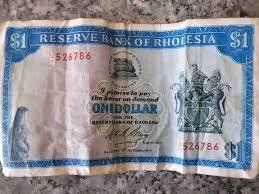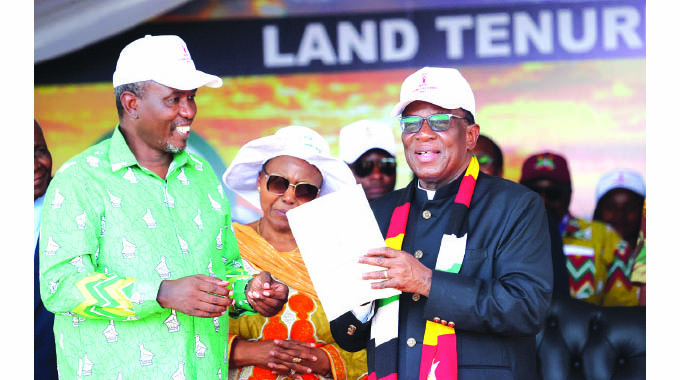ZIMBABWE'S gold output rose 13,4 percent last year to 14 742kg from 12 992kg a year earlier, but fell short of the targeted 15 000kg, latest figures from the Chamber of Mines show. Gold revenues
were up 18,9 percent to US$782,75 million from the previous comparable period.
At its peak in 1999, Zimbabwe produced 27 tonnes of gold, but output declined to a record low of 3 000kg in 2007 as a result of the economic recession and mine closures. The chamber, which represents Zimbabwe's miners, said the sector requires as much as US$1 billion to achieve 50 000kg over a five-year period.
The increased gold production comes at a time when Zimbabwe is seeking readmission on the London Bullion Market Association, a London-based trade association that represents the wholesale market for gold and silver.
Zimbabwe was disqualified from LBMA due to successive declines in gold production triggered by economic challenges and poor economic policies which resulted in many gold mining companies closing down.
The country's top gold mines include Metallon, owned by South African businessman Mzi Khumalo, Duration Gold Zimbabwe, Blanket Mine and New Dawn Corporation. New Dawn, the Toronto-listed firm, yesterday reported gold production for the quarter ended December 31, 2012 of 9 069 ounces compared to 9 095 ounces in the same period in 2011.
Gold sales for the quarter were US$16,6 million compared to US$15,4 million a year earlier. New Dawn said it intends to invest US$37 million in the next four years to ramp up production. Its properties include 100 percent of the Turk and Angelus, Old Nic and Camperdown Mines. Through its Falcon Gold Zimbabwe Limited subsidiary, New Dawn owns 84,7 percent of the Dalny, Golden Quarry and Venice mines, and a portfolio of prospective exploration acreage in the country.
Last year, Duration Gold said it was aggressively pursuing growth for its Zimbabwean mines. Duration Gold, a privately owned firm controlled by the Jersey-based Clarity Capital, acquired several Zimbabwean mines in 2006, which it kept under care and maintenance until 2009.
Gold production at Blanket Mine in Gwanda increased 27 percent to 45 623 ounces last year compared to 35 826 ounces in the same period in 2011, the company announced last week. Small-scale miners are also contributing significantly to gold output with some financial institutions coming up with facilities to assist small-scale producers.
Zimbabwe is set to benefit from a projected bull run of the yellow metal this year. Global gold prices have risen for 12 consecutive years, positioning it as one of the longest-running bull markets in history. Prices started 2012 at US$1 531 per ounce and by December 31, 2012, it was at US$1 657 per ounce.
Dubai based gold trader, investor and chief executive of Golf and Silver Club Mr Nik Kalsi expressed omptimism that the bull run will continue.
"Every healthy bull market goes through periods of consolidation and gold is no exception. Given the extent of the 2008 to 2011 super-charged rally, the fact prices have consolidated is unsurprising - that's a natural cycle within any bull market. Looking at the long-term picture, I'm optimistic that gold's bull run will continue," he said.
He said gold usually performs positively in times of economic uncertainty, noting the global economic drivers which have brought the yellow metal to where it is were "virtually all still in place."
The central banks, Mr Kalsi said would also play a pivotal role in determining gold's performance this year. Last year, central banks switched from being net sellers of gold to net buyers. The most active buyers were emerging market economies.
In the first nine months of 2012, central banks in emerging markets bought a total of 500 tonnes of gold - up from 465 tonnes in 2011. In the Middle East, that included the central bank of Azerbaijan, Kazakhstan, Iraq and Turkey. This trend was likely to continue this year and will have a positive impact on prices.
Demand for gold, particulary from China, India and the United Arab Emirates which account for approximately 65 percent of consumer demand is projected to increase this year.
Chinese inflation data released last week showed positive signs that the East Asian economy is bottoming out and beginning to recover again. As such, Chinese gold demand is estimated to grow around 10 percent this year from about 800 tonnes in 2012, according to The World Gold Council.
- TH
 Zimbabwe launches new airline
Zimbabwe launches new airline  Hichilema meets Chivayo
Hichilema meets Chivayo  Millions celebrate Diwali festival in India
Millions celebrate Diwali festival in India  SA bitcoin firm mulls Zimbabwe listing
SA bitcoin firm mulls Zimbabwe listing  Gold edges up as traders await guidance
Gold edges up as traders await guidance  Airlink applies for Lanseria to Harare, Bulawayo route
Airlink applies for Lanseria to Harare, Bulawayo route  Young Investment Professional (YIP) Graduate Programme 2019
Young Investment Professional (YIP) Graduate Programme 2019 











 Young Investment Professional (YIP) Graduate Programme 2019
Young Investment Professional (YIP) Graduate Programme 2019
Editor's Pick